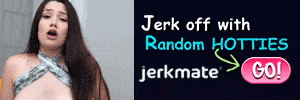AI image generators are developed on massive amounts of data, including huge collections of photos. During the training process, the machines learn many elements and attributes of the photos in the dataset.
As a result, they can generate new images with identical style and content to the ones in the training set.
People nowadays are familiar with the use of visual effects (VFX) and computer-generated imagery (CGI), technologies that have made it easy to create lifelike images that enhance the sensation of realism.
We have had the chance to watch some of our favorite movies, such as Avatar and Jurassic Park, due to these state-of-the-art technologies.
The above instance takes us into a fascinating world where image generation and the creation of visually rich material are at the center of AI’s powers.
Businesses and artists are turning increasingly to AI for picture production, making it necessary to grasp.
Table of Contents
What is AI Image Generation?

An AI image generator is a program driven by artificial intelligence that accepts a written prompt, processes it, and generates an image that best corresponds to the information provided in the prompt. AI photo generation is totally separate from sourcing.
While image-sourcing technologies allow you to find and download existing photos from various sources, an AI image generator makes wholly new pictures that don’t exist in the real world.
What separates them from others is their ability to combine styles, themes, and characteristics to create artistic and culturally meaningful images.
Generative AI, a type of artificial intelligence dedicated to content creation, makes this feasible.
AI image generators read text prompts by converting the written information into a machine-friendly language known as embeddings.
This conversion is started by a Natural Language Processing (NLP) model, which is the Contrastive Language-Image Pre-training (CLIP) model seen in diffusion algorithms like DALL-E.
Will AI Image Generators Replace Human Artists?
The short answer is probably no. Despite significant advancements, AI continues to lack the delicate creativity and emotions that human artists give to their art.
In addition, AI image generators are fundamentally restricted because they rely on language prompts.
As a result, instead of completely replacing artists, AI is used to support and empower them in their artistic activities.
It also has the ability to improve the creative process by opening up new areas of exploration and making it easier to create outstanding-quality work.
Benefits of AI Image Generation

AI picture generators provide several advantages for content makers and other creators. With a few clicks of the mouse, you can create photographs that look to have been captured by a skilled photographer.
In this regard, the Vidnoz AI Headshot Generator is an AI technology that can turn your selfies into excellent headshots without the need for costly photo sessions.
AI image generators can generate images of objects that could not possibly exist in real life. So, the benefits include not only saving time and cash but also the capacity to transform your craziest thoughts into reality.
Limitations of AI Image Generation
It is impossible to generate flawless human faces. Dependence on possibly biased pre-trained datasets and difficulties fine-tuning AI models are only a few of the significant issues in assuring genuineness and accuracy.
Achieving the right degree of realism requires difficult adjusting of model parameters, which may prove complicated and tedious. This is particularly noticeable in medicine, where AI-generated images used in treatment must be highly precise.
The veracity and quality of AI-generated images are strongly dependent on the information used to develop the models, and there is always a high risk of favoritism.
Conclusion
AI image generators are useful for any content marketer. Just educating and familiarizing yourself with this software will allow you to generate outstanding images that can set your content apart from your rivals.
AI offers a variety of options for customizing what comes out. It is suggested that you try with these settings in order to achieve the appropriate results. Adjusting the options will enable you to personalize the AI image result to your own requirements







